Navigation
Install the app
How to install the app on iOS
Follow along with the video below to see how to install our site as a web app on your home screen.

Note: This feature currently requires accessing the site using the built-in Safari browser.
More options
You are using an out of date browser. It may not display this or other websites correctly.
You should upgrade or use an alternative browser.
You should upgrade or use an alternative browser.
Lomo and stuff...
- Thread starter eelakk
- Start date
PJL
TPF Noob!
- Joined
- Sep 12, 2009
- Messages
- 418
- Reaction score
- 18
- Location
- Upstate NY
- Can others edit my Photos
- Photos OK to edit
The whole "lomography" thing comes from the cheapness of the camera -- plastic lenses, light leaks, little (if any) aperture, shutter, or focus control, etc.
Josh66
Been spending a lot of time on here!
- Joined
- Oct 31, 2007
- Messages
- 14,593
- Reaction score
- 1,239
- Location
- Cedar Hill, Texas
- Can others edit my Photos
- Photos NOT OK to edit
You can use Lomo film in any 35mm camera...
It's basically film that is crappy on purpose. I have shot some Lomo Redscale film, and actually liked it... It's something different.
It's basically film that is crappy on purpose. I have shot some Lomo Redscale film, and actually liked it... It's something different.
Vautrin
No longer a newbie, moving up!
- Joined
- Jun 26, 2008
- Messages
- 927
- Reaction score
- 58
- Location
- It changes
- Website
- www.withoutamapphotography.com
- Can others edit my Photos
- Photos OK to edit
What do you mean by "lomo" film?
As PJL mentioned, lomography cameras are actually crappy cameras from a technical perspective, with all kinds of "flaws" that a serious camera would avoid.
But, many of us find these "flaws" provide an unpredictability to photos, and that aesthetically they can be quite pleasing.
Below is an example of a lomo picture I took using a Holga camera using Kodak Ektar iso 100 120mm film

Click to the actual image so you can see the details. There's a couple of things you'll notice:
1. Around the edges the picture gets darker and eventually fades to black. This is called "vignetting" and is due to the fact that the lens doesn't let in enough light (and evenly through the film) to properly expose the film. It's a problem they probably solved close to a century ago
2. The right side of the film (particularly the bottom right) has a reddish tint. This is due to the light leaks in the camera. They're actually quite unpredicatable -- i've had shots turn out green or yellow or other strange tints using daylight film shot in daylight.
3. The image is quite soft and not sharp even though I correctly focused. Look closely at the lighthouse -- 120mm film is very roughly 3-4x the size of 35mm film around each of the edges, so the area is maybe a factor of 10 to 16 larger. This should translate into a tack sharp image -- and if you see a picture shot with a mamiya you'll see it immediately.
Personally I think these "flaws" make what would have been otherwise a very plain photo of a lighthouse beautiful and aesthetically pleasing. That's just my opinion and you either love or hate the lomo thing.
Lomographers do the following to encourage these "flaws" in their film:
1. Shoot with a plastic camera. Plastic lenses won't be sharp and the things will leak light all over the place. Also since it's a cheap lens you'll get lots of vignetting
2. Shoot with expired film. Old film can do funny things when developed
3. Shoot with cross processing -- have film developed in different chemistries to change the feel of the film.
4. Shoot wihtout a meter -- while SLRs have many settings in terms of exposure time and apererature, lomo cameras have only one -- which makes getting well exposed film a problem.
Lomography brand film is just film Lomo sources from somewhere -- but it's not going to necessarily result in lomo type pictures if you shoot with, say, a Pentax...
Keep in mind there are some lomo films out there like the redscale and the various rollei films like redbird and nightbird that are designed to react differently to light then normal film. These will produce strange results in a normal camera.
The best advice I can give you is to pick up some film and shoot, shoot, shoot. See what you like and have fun with it...
Oh, and the holga can be fun to pick up too. It's quite an entertaining little camera...
As PJL mentioned, lomography cameras are actually crappy cameras from a technical perspective, with all kinds of "flaws" that a serious camera would avoid.
But, many of us find these "flaws" provide an unpredictability to photos, and that aesthetically they can be quite pleasing.
Below is an example of a lomo picture I took using a Holga camera using Kodak Ektar iso 100 120mm film

Click to the actual image so you can see the details. There's a couple of things you'll notice:
1. Around the edges the picture gets darker and eventually fades to black. This is called "vignetting" and is due to the fact that the lens doesn't let in enough light (and evenly through the film) to properly expose the film. It's a problem they probably solved close to a century ago
2. The right side of the film (particularly the bottom right) has a reddish tint. This is due to the light leaks in the camera. They're actually quite unpredicatable -- i've had shots turn out green or yellow or other strange tints using daylight film shot in daylight.
3. The image is quite soft and not sharp even though I correctly focused. Look closely at the lighthouse -- 120mm film is very roughly 3-4x the size of 35mm film around each of the edges, so the area is maybe a factor of 10 to 16 larger. This should translate into a tack sharp image -- and if you see a picture shot with a mamiya you'll see it immediately.
Personally I think these "flaws" make what would have been otherwise a very plain photo of a lighthouse beautiful and aesthetically pleasing. That's just my opinion and you either love or hate the lomo thing.
Lomographers do the following to encourage these "flaws" in their film:
1. Shoot with a plastic camera. Plastic lenses won't be sharp and the things will leak light all over the place. Also since it's a cheap lens you'll get lots of vignetting
2. Shoot with expired film. Old film can do funny things when developed
3. Shoot with cross processing -- have film developed in different chemistries to change the feel of the film.
4. Shoot wihtout a meter -- while SLRs have many settings in terms of exposure time and apererature, lomo cameras have only one -- which makes getting well exposed film a problem.
Lomography brand film is just film Lomo sources from somewhere -- but it's not going to necessarily result in lomo type pictures if you shoot with, say, a Pentax...
Keep in mind there are some lomo films out there like the redscale and the various rollei films like redbird and nightbird that are designed to react differently to light then normal film. These will produce strange results in a normal camera.
The best advice I can give you is to pick up some film and shoot, shoot, shoot. See what you like and have fun with it...
Oh, and the holga can be fun to pick up too. It's quite an entertaining little camera...
Josh66
Been spending a lot of time on here!
- Joined
- Oct 31, 2007
- Messages
- 14,593
- Reaction score
- 1,239
- Location
- Cedar Hill, Texas
- Can others edit my Photos
- Photos NOT OK to edit
What do you mean by "lomo" film?
Roll Film
I thought that's what the OP was talking about...
The only one I've ever actually used is the redscale one.


Those were taken in a 'normal' camera - a 1N RS.
Josh66
Been spending a lot of time on here!
- Joined
- Oct 31, 2007
- Messages
- 14,593
- Reaction score
- 1,239
- Location
- Cedar Hill, Texas
- Can others edit my Photos
- Photos NOT OK to edit
The redscale film is just film that's loaded in the cassette backwards (so you shoot through the emulsion side). Even if it wasn't backwards, it's still not 'good' film. That blue streak going through the first one wouldn't be there if it was 'good' film just loaded backwards. I don't know what film they're using (can't really tell be looking at the negatives either). It's probably the same film they use for their 100 ISO color film, just loaded backwards.
Redbird is something different... Not sure exactly how that works. I don't think it's loaded backwards though.
Redbird is something different... Not sure exactly how that works. I don't think it's loaded backwards though.
Vautrin
No longer a newbie, moving up!
- Joined
- Jun 26, 2008
- Messages
- 927
- Reaction score
- 58
- Location
- It changes
- Website
- www.withoutamapphotography.com
- Can others edit my Photos
- Photos OK to edit
The redscale film is just film that's loaded in the cassette backwards (so you shoot through the emulsion side). Even if it wasn't backwards, it's still not 'good' film. That blue streak going through the first one wouldn't be there if it was 'good' film just loaded backwards. I don't know what film they're using (can't really tell be looking at the negatives either). It's probably the same film they use for their 100 ISO color film, just loaded backwards.
Redbird is something different... Not sure exactly how that works. I don't think it's loaded backwards though.
What exactly is "good" film?
The film is neither "good" nor "bad" It's just created to different standards so it reacts to light differently and produces different colors and image qualities.
The thing with lomography is you either love it or you hate it. The films used and the cameras used aren't "good" from a traditional perspective, but many people like the effects they have.
Let me put it another way, Kodak E100 VS will give you some wacked out very saturated colors. People might appear sunburnt, for instance.
Is the film bad? Not necessarily, some people love the saturation, and for some subject matters it looks good.
The film is neither good or bad, it simply provides a medium for the photographer to make pictures with. The only thing the film does is set constraints for how the pictures will look after developing...
Josh66
Been spending a lot of time on here!
- Joined
- Oct 31, 2007
- Messages
- 14,593
- Reaction score
- 1,239
- Location
- Cedar Hill, Texas
- Can others edit my Photos
- Photos NOT OK to edit
...You know what I meant.
That's why I put 'good' in quotes. I just meant that if it weren't loaded backwards (so that it would be a 'normal' color film), it wouldn't look like Fuji 160S, for example.
It would still have 'defects'. I was just trying to point out that you don't have to have a 'crappy' camera to shoot 'crappy' film and still get 'crappy' results. Of course, a 'crappy' camera would probably help to exaggerate the 'crappiness' of the film.
I hope you can read that without taking every word literally...
That's why I put 'good' in quotes. I just meant that if it weren't loaded backwards (so that it would be a 'normal' color film), it wouldn't look like Fuji 160S, for example.
It would still have 'defects'. I was just trying to point out that you don't have to have a 'crappy' camera to shoot 'crappy' film and still get 'crappy' results. Of course, a 'crappy' camera would probably help to exaggerate the 'crappiness' of the film.
I hope you can read that without taking every word literally...
guajero
TPF Noob!
Anything you can do with a Lomo you can do with a regular camera. When you do it with a regular camera is just costs less. Buy some old film and send it to the worst lab in town or buy super old slide film and cross process it.
Vautrin
No longer a newbie, moving up!
- Joined
- Jun 26, 2008
- Messages
- 927
- Reaction score
- 58
- Location
- It changes
- Website
- www.withoutamapphotography.com
- Can others edit my Photos
- Photos OK to edit
depends on which one of their crazy cameras you're trying to take pictures like
Josh66
Been spending a lot of time on here!
- Joined
- Oct 31, 2007
- Messages
- 14,593
- Reaction score
- 1,239
- Location
- Cedar Hill, Texas
- Can others edit my Photos
- Photos NOT OK to edit
I saw that a while ago. Looks ... interesting, lol.depends on which one of their crazy cameras you're trying to take pictures like
A little cheaper on B&H:
Lomography Spinner 360° Panoramic Camera 919 - B&H Photo
LOL, 'rubber band drive'. I guess it could be fun to mess around with if you don't mind spending $130-200 on a 'toy'.Rubber band drive + fully manual controls (no batteries required)
Vautrin
No longer a newbie, moving up!
- Joined
- Jun 26, 2008
- Messages
- 927
- Reaction score
- 58
- Location
- It changes
- Website
- www.withoutamapphotography.com
- Can others edit my Photos
- Photos OK to edit
You know I think the thing with lomo stuff is nobody else makes it. Yes you could manufacture a similar pano camera for much cheaper but no one does itso lomo is king of the hilll
Josh66
Been spending a lot of time on here!
- Joined
- Oct 31, 2007
- Messages
- 14,593
- Reaction score
- 1,239
- Location
- Cedar Hill, Texas
- Can others edit my Photos
- Photos NOT OK to edit
If it were cheaper, I'd probably have one already. $150 is hard (for me) to justify though, considering what it does...
I think if I lived somewhere more interesting, it might seem like a better idea.
Around here, a 360* pano would be pretty boring, lol.
I think if I lived somewhere more interesting, it might seem like a better idea.
Around here, a 360* pano would be pretty boring, lol.
Vautrin
No longer a newbie, moving up!
- Joined
- Jun 26, 2008
- Messages
- 927
- Reaction score
- 58
- Location
- It changes
- Website
- www.withoutamapphotography.com
- Can others edit my Photos
- Photos OK to edit
If it were cheaper, I'd probably have one already. $150 is hard (for me) to justify though, considering what it does...
I think if I lived somewhere more interesting, it might seem like a better idea.
Around here, a 360* pano would be pretty boring, lol.
Yeah it's funny on that site, isn't it? They've got all the cheap little plastic cameras that are cool as hell. At $20 a pop I'd own all of them. But at over $100 a pop most of them are pretty much worthless for me, since I wouldn't use them enough to justify them. Like the one that takes 20 shots on the same piece of 35mm frame.
Similar threads
- Replies
- 3
- Views
- 335
- Replies
- 20
- Views
- 510
- Replies
- 5
- Views
- 403
- Replies
- 0
- Views
- 91

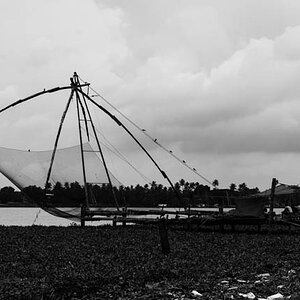
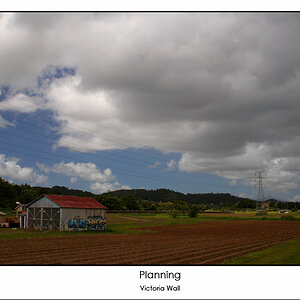



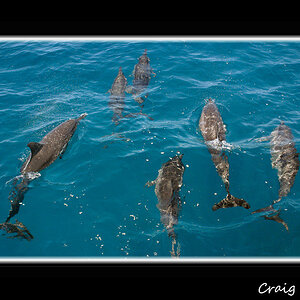
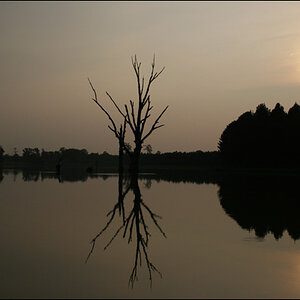

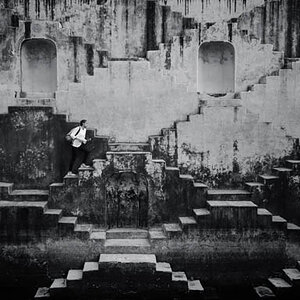
![[No title]](/data/xfmg/thumbnail/37/37605-90c8efaef5b7d1f52d4bf8e7dfd33673.jpg?1619738148)
![[No title]](/data/xfmg/thumbnail/37/37606-3c9ffb5906173fa2aa489341967e1468.jpg?1619738148)
